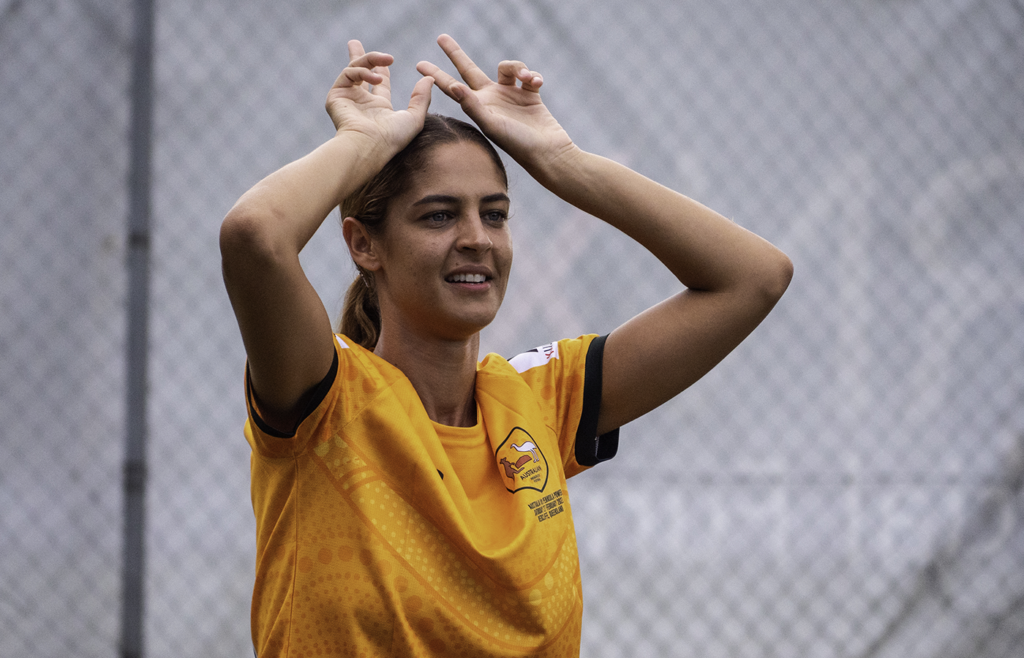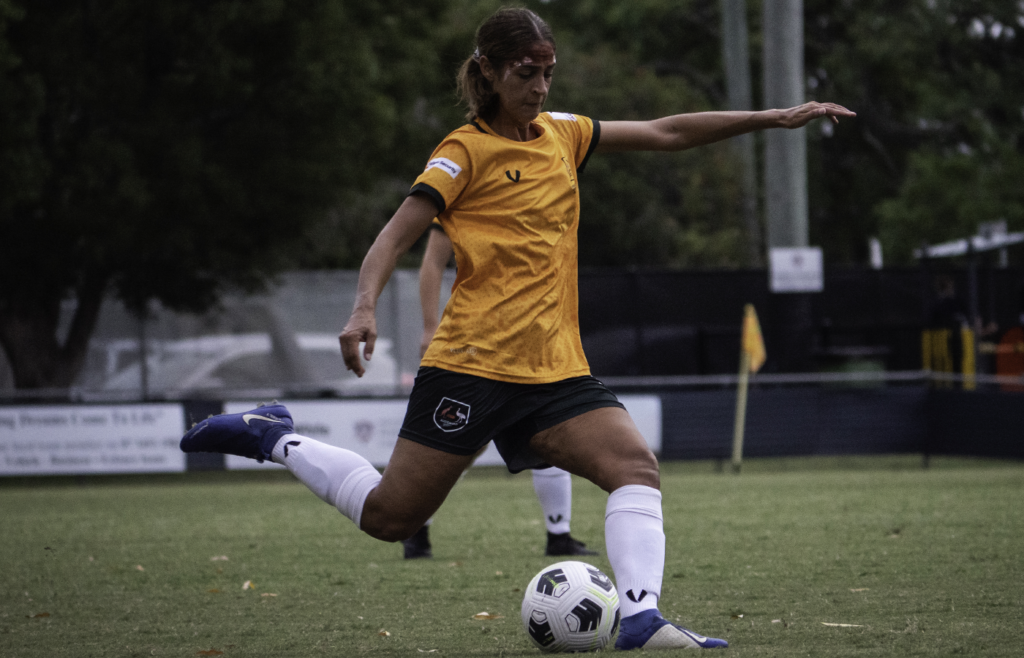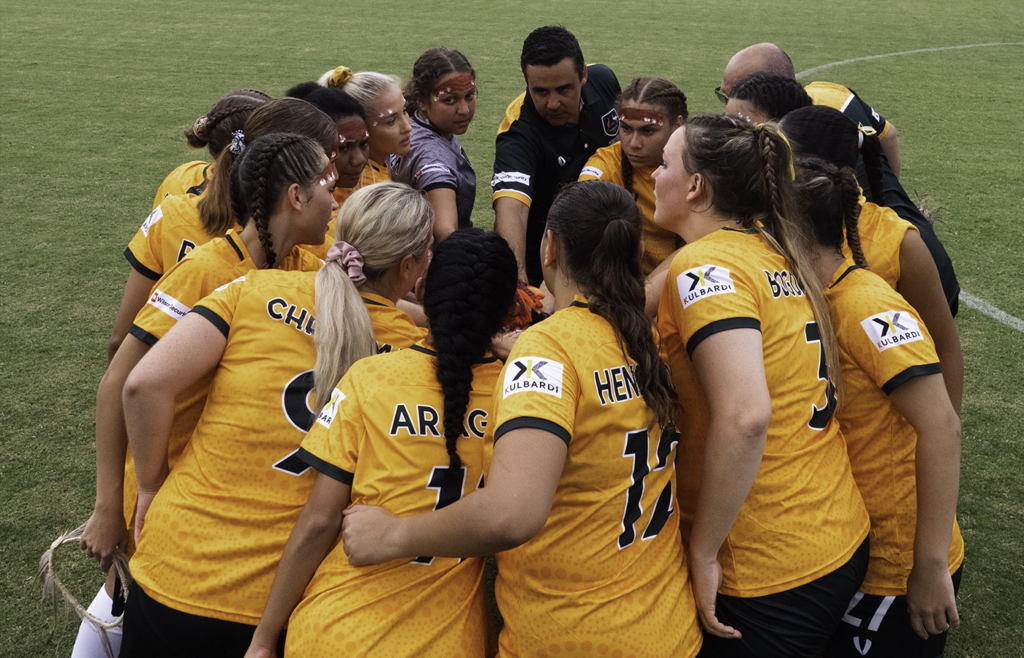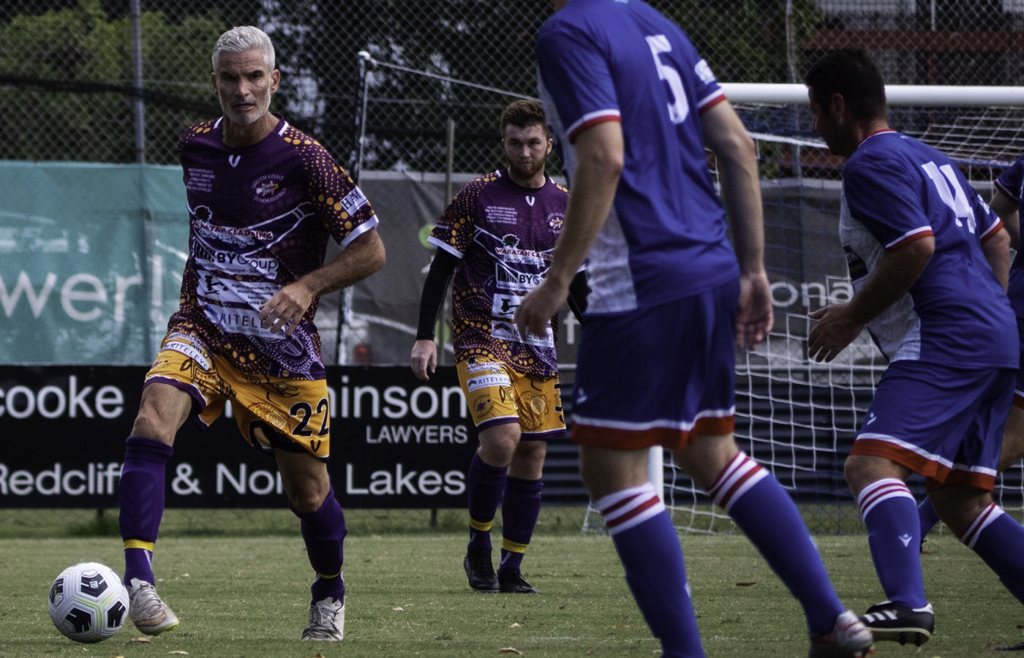Joe Gorman is an independent journalist and author. His first book, The Death and Life of Australian Soccer, was hailed as ‘one of the best and most important written on Australian sport’ by The Age, and long-listed for the 2017 Walkley Book Award. With the PFA, Joe will explore various issues impacting Australian football. Joe recently attended the 2021 Festival of Indigenous Football in Queensland where he had the opportunity to reflect on Australian football’s engagement with our First Nations People.

Words by Joe Gorman
Kirrily Phillips had been waiting a long time to play football with her own people. The 32 year-old fullback, who plays in the Brisbane Premier League, had grown accustomed to being the only Indigenous player on the field. She knew there were other Indigenous players out there, of course, but what football always lacked was a forum through which those identities could be expressed.
That all began to change two years ago, when Phillips decided to organise a team to participate in the 2019 Australian Indigenous Football Championships. The experience of playing for Jiinda Magic, as her team was called, was exhilarating. “It’s such a different feeling: we’re working for our sisters, our communities, our families,” she explains. “We put that extra level of drive into it.”

From there, Phillips earned selection for an Indigenous national team which featured in the 2021 Festival of Indigenous Football. As part of the the festival, which was held in Brisbane on Saturday 27 February, the Indigenousroos men’s side lost to defending Queensland NPL premiers Peninsula Power, while the Indigenous Koalas women’s team beat the Power’s NPLW side. Phillips won the best and fairest award.
Phillips is a Gumbaynggirr woman with close connections to the Bundjalung and Dunghutti nations. She grew up in a rugby league family in Northern NSW and works for an Indigenous controlled health service in Brisbane. As one of the oldest players in the Koalas, she is aware of both the historic neglect of Indigenous football and the potential that exists within her community. “I have waited a long time for an opportunity like this to come around,” she says. “It’s so important, because I look at some of these girls on my team and think, that was me 15 years ago.”

The Indigenous national teams were organised by Lawrence Gilbert, a former Futsalroo, and Ramone Close, a former Australian Schoolboys representative. Close, who played in the lower leagues of Belgium and Poland, understands the loneliness that can come with being an Indigenous footballer. “You’re almost a minority within a minority; you do feel different and you’re seen differently by your community,” he says. “That’s one of the reasons why Lawrence and I started the Indigenousroos and the Koalas.”
Indigenous football currently sits at a crossroads. According to Football Australia, in 2019 there were 17,086 participants nationally that identified as Aboriginal and Torres Strait Islander. But there are no current Indigenous Socceroos and only two players, Tate Russell and Luis Lawrie-Lattanzio, are signed to senior A-League contracts. In the W-League, there is Allira Toby, Jada Whyman and Shadeene Evans at Sydney FC and Gema Simon at Newcastle Jets. Matildas goalkeeper Lydia Williams plays for Arsenal in the Women’s Super League and Kyah Simon is contracted to PSV in the Netherlands.
Travis Dodd (pictured below), who is widely believed to be the first Indigenous goalscorer for the Socceroos, sees plenty of potential among the women he coached in the Indigenous Koalas. “I’ve had some involvement with the Adelaide United women’s team, and being part of this camp – just for a couple of sessions – there’s players that have got the ability to make the next step,” he says. “They just need the opportunity.”

The new regime at Football Australia is aware of the need for investment in this area. In its XI Principles For The Future of Football document, released in July 2020, there is a plan to establish men’s and women’s Indigenous national teams, and a vision for the game to become “a leader in Indigenous sporting programs and the reconciliation process for Indigenous Australians.” Football Australia is also expected to appoint a National Indigenous Manager in 2021.
In the absence of a coordinated strategy, several community and private initiatives have sprung up. In Queensland, Olympic FC recently became the first football club in Australia to become part of the Reconciliation Action Plan program. Further north, Football NT has an Indigenous advisory committee and supports an all-Indigenous side, the NT Yapas, in the women’s premier league.
Meanwhile, John Moriarty Football has expanded beyond the Northern Territory to hubs in Queensland and New South Wales, ex-Socceroo Jade North runs his Kickin’ with a Cuz program, and there are annual Indigenous tournaments in New South Wales and Queensland.
In other words, clubs and communities are simply getting on with the job of trying to deliver programs for young Indigenous footballers. The fact that Saturday night’s game was attended by Ken Wyatt, the Federal Minister for Indigenous Australians, suggests there could be support for Indigenous football within government circles. And while Lawrence Gilbert hopes to work with Football Australia in future, he has faith in the progress that has already been made. “I think if we waited for a strategic plan from the peak body, we’d lose the traction and momentum that we have at the moment,” he says.
One of Gilbert’s highest-profile supporters is former Socceroo Craig Foster, who has been involved with various Indigenous football programs over the years. The big challenge for Football Australia, says Foster, will be to develop a strategy for Indigenous football whilst also productively engaging with the initiatives already in place.
“One of the mistakes the game has made is the same mistake that broader Australia is still making, and that is we are still continually trying to tell Indigenous communities what’s best for them,” he says. “Clearly, the game has taken a top-down, short-term, programatic approach without ever really facing the reality of what our relationship is with Indigenous Australia.”

According to Foster (above), co-hosting the 2023 Women’s World Cup presents an opportunity for Australian football to reset its relationship with Indigenous communities. “What does Indigenous recognition, reconciliation, self-determination and Indigenous rights look like in this 2023 Women’s World Cup?” he asks. “That’s the conversation the football community needs to have. Of course we’re going to get some Indigenous motifs on a jersey; of course we’re going to have a welcome to country. Symbolism is important, but it must be about far more than that.”
The irony here is that football has long provided a space for other cultures to develop their own community networks. Kirrily Phillips’s club, AC Carina, is closely aligned with the Brisbane Abruzzo Association. Travis Dodd remembers being introduced to Italian language and culture when he joined Adelaide City as a junior player. But there are still no football equivalents to the Fitzroy Stars in Australian Rules, or rugby league’s Redfern All Blacks.
In this context, the concept of Indigenous national teams, while still in its infancy, is one way for communities to practice self-determination while also providing an opportunity for players to be identified for professional clubs and other representative sides. The NRL, which sanctions and promotes the Indigenous All Stars match every year, is clearly the market leader in this space. Yet as the Indigenousroos and Koalas showed last Saturday, there is plenty of potential in football, too.
“This has reconnected me and brought my passion back for the game,” says Kiefer Dotti, a former Sydney FC youth player who played at centre back for the Indigenousroos. “I love coming away with my mob and playing with these guys. Hopefully there’s more to come.”
Likewise, Kirrily Phillips is excited by the prospect of football providing a vehicle for cultural empowerment and connection. The experience of being in camp with the Koalas has left her energised for the new season ahead. “I still feel like I’m walking on clouds,” she said on Monday. “It was such an amazing few days.”
Photos supplied by Football Queensland
Joe Gorman headshot by Jack Baxter







